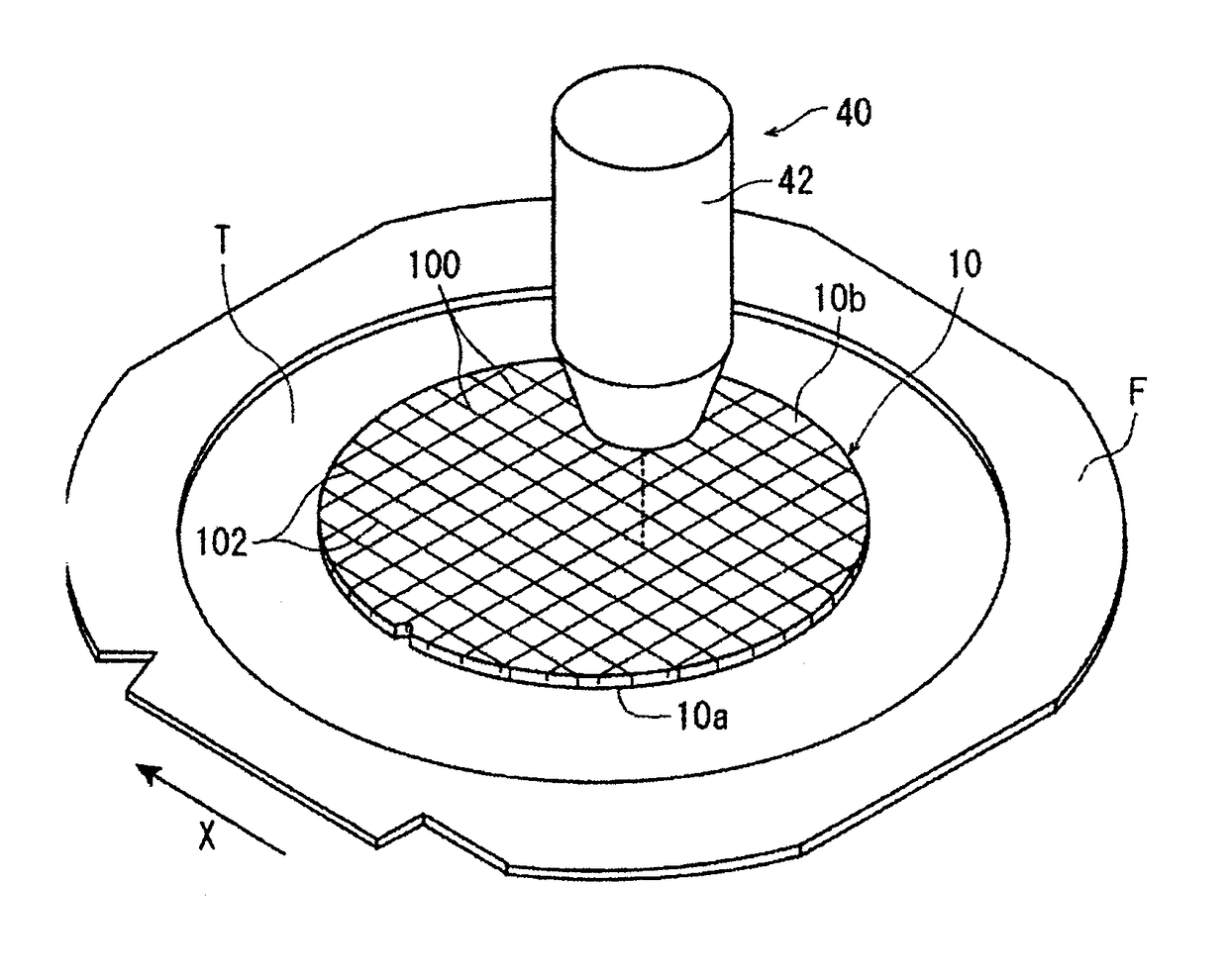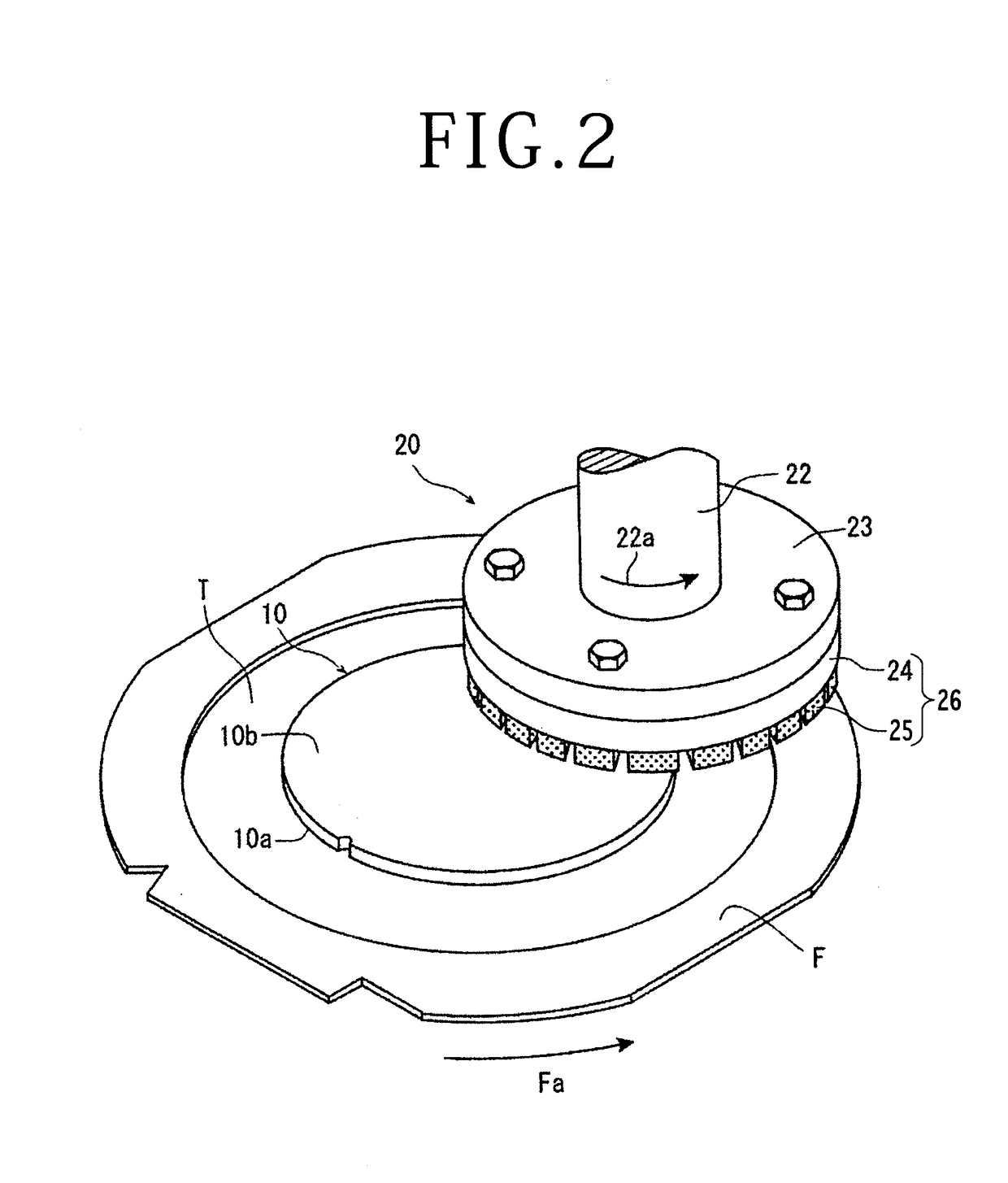Wafer processing method
- Summary
- Abstract
- Description
- Claims
- Application Information
AI Technical Summary
Benefits of technology
Problems solved by technology
Method used
Image
Examples
Embodiment Construction
[0026]A preferred embodiment of the wafer processing method according to the present invention will now be described in detail with reference to the attached drawings. FIGS. 1A and 1B illustrate a wafer supporting step of supporting a wafer 10 through an adhesive tape T to an annular frame F. More specifically, as illustrated in FIG. 1A, the wafer 10 has a front side 10a and a back side 10b. The adhesive tape T is attached to the front side 10a of the wafer 10. A peripheral portion of the adhesive tape T is previously attached to an annular frame F having an inside opening for receiving the wafer 10. That is, the inside opening of the annular frame F is closed by a central portion of the adhesive tape T, and this central portion of the adhesive tape T is attached to the front side 10a of the wafer 10. Thus, the wafer 10 is supported through the adhesive tape T to the annular frame F. After supporting the wafer 10 through the adhesive tape T to the annular frame F, the back side 10b ...
PUM
 Login to View More
Login to View More Abstract
Description
Claims
Application Information
 Login to View More
Login to View More - R&D Engineer
- R&D Manager
- IP Professional
- Industry Leading Data Capabilities
- Powerful AI technology
- Patent DNA Extraction
Browse by: Latest US Patents, China's latest patents, Technical Efficacy Thesaurus, Application Domain, Technology Topic, Popular Technical Reports.
© 2024 PatSnap. All rights reserved.Legal|Privacy policy|Modern Slavery Act Transparency Statement|Sitemap|About US| Contact US: help@patsnap.com










